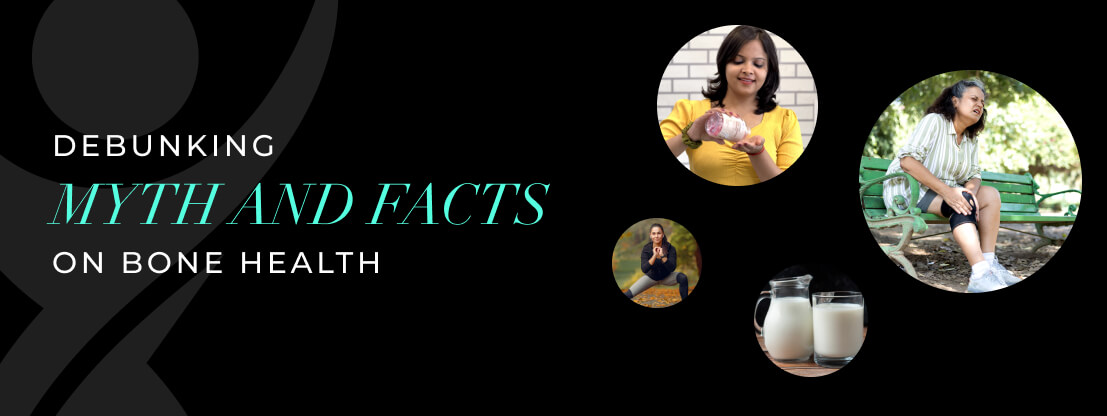The human body relies on bones to function properly, as they play a vital role in supporting muscles and enabling activities like walking and biking. During growth, the body works at a faster pace to replace old bones with newer ones, resulting in an overall increase in bone mass. However, when it comes to taking care of our bones, various misconceptions can confuse individuals. This article aims to debunk these myths and provide authentic facts about bone health. Additionally, we will explore the role of bone growth gummies in enhancing bone health and growth.
Myth 1: Only elderly people need to worry about bone health.
Fact: It is a myth that only elderly people need to be concerned about the health of their bones. However, the reality is that one should be conscious about one’s bone health from early in life. One of the key factors in promoting optimal bone development is ensuring an adequate intake of important nutrients, such as calcium and vitamin D. In addition to nutrition, engaging in weight-bearing exercises like walking or running is crucial for optimal bone health. By establishing a solid foundation for bone health during one’s childhood and adolescence, individuals can reduce the risk of osteoporosis and fractures later in life.
Myth 2: Osteoporosis Only Affects Elderly Women
Fact: Osteoporosis is a condition commonly associated with women, but men are also affected and at risk of developing it due to factors such as hormonal changes and lower bone density. Both genders should prioritize bone health and take preventive measures.
Myth 3: Consumption of milk and other dairy products is essential for maintaining strong and healthy bones.
Fact: Milk and yoghurt are part of the dairy group, and they contain calcium, which is important for keeping our bones strong and healthy. However, they are not the exclusive sources of calcium. Calcium can also be found in other foods like green leafy vegetables such as broccoli and kale, almonds, sardines, and fortified plant-based milk alternatives. It’s important to note that bone health relies not only on calcium but also on nutrients like vitamin D and magnesium. A balanced diet that includes a variety of foods is necessary to support overall bone health.
Myth 4: Bone growth gummies are ineffective in promoting bone health and growth.
Fact: Contrary to the myth, gummies can actually be a convenient and enjoyable way to enhance your diet with essential nutrients that support bone development. Some gummies are specifically formulated with calcium, vitamin D, and other vital nutrients that contribute to strong bones. It is important, however, to choose high-quality gummies from reputable brands and follow the recommended dosage for optimal results.
Myth 5: Exercise involving weight and resistance, can only help strengthen your bones.
Fact: When individuals combine weight-bearing exercises, such as walking, running, and playing tennis, with resistance exercises like lifting weights or using resistance bands, they exert pressure on their bones, as they are working against the force of gravity to support their boy weight, this makes their bones more resilient. However, these are not the only forms of exercise. Engaging in exercises such as yoga and tai chi focuses on strengthening the core and building muscles, which improves balance and bone health.
Myth 6: Calcium is the only nutrient that supports bone health.
Fact: While consuming calcium is a crucial nutrient for maintaining strong bones, other nutrients play a vital role in keeping our bones strong. Vitamin D is a nutrient which can be obtained from foods such as fatty, fish, salmon and tuna, as well as sunlight, while magnesium contributes to bone structure. Additionally, vitamin K, phosphorus, and trace minerals like zinc and copper are also important. A well-balanced diet, including a variety of foods, is the best way to obtain these nutrients.
Myth 7: Once osteoporosis develops, there is no way to improve bone health.
Fact: Osteoporosis is a serious condition where the balance between bone breakdown and formation is disrupted, leading to weakened bones. However, it is a misconception that bone health cannot be improved once osteoporosis is diagnosed.
In reality, there are some strategies that can be implemented to slow down the progression of osteoporosis and reduce the risk of fractures. These include following a nutritious diet that includes sufficient calcium and vitamin D, engaging in weight-bearing exercises or resistance training, and considering medications that can enhance bone density and reduce fracture risk.
It is essential to consult with a healthcare provider who can develop a tailored plan to address your individual needs and help improve your bone health even after an osteoporosis diagnosis. By implementing these measures, it is possible to make a positive impact on bone health and reduce the risk of fractures.
Conclusion
Understanding the truth about bone health is crucial for maintaining a strong and healthy body. While bone growth gummies can be a convenient way to supplement our diet with vital nutrients, it’s important to remember that they should be seen as a complement to a healthy lifestyle. A balanced diet and regular exercise play a key role in promoting bone health and reducing the risk of osteoporosis and fractures. Consulting with healthcare professionals for personalized advice is always recommended.




